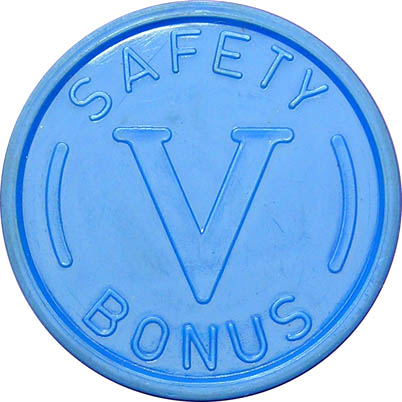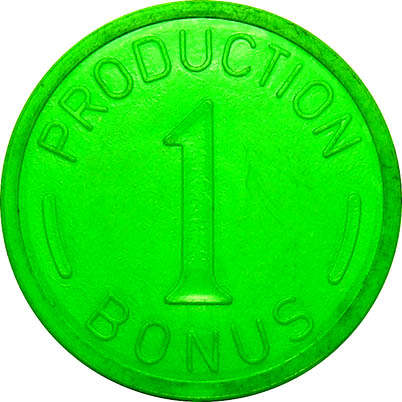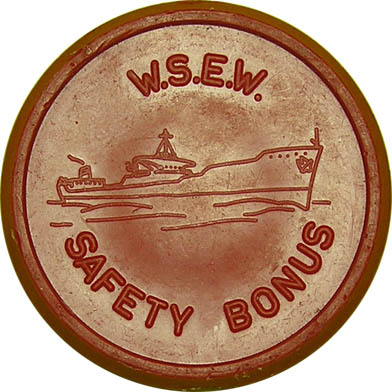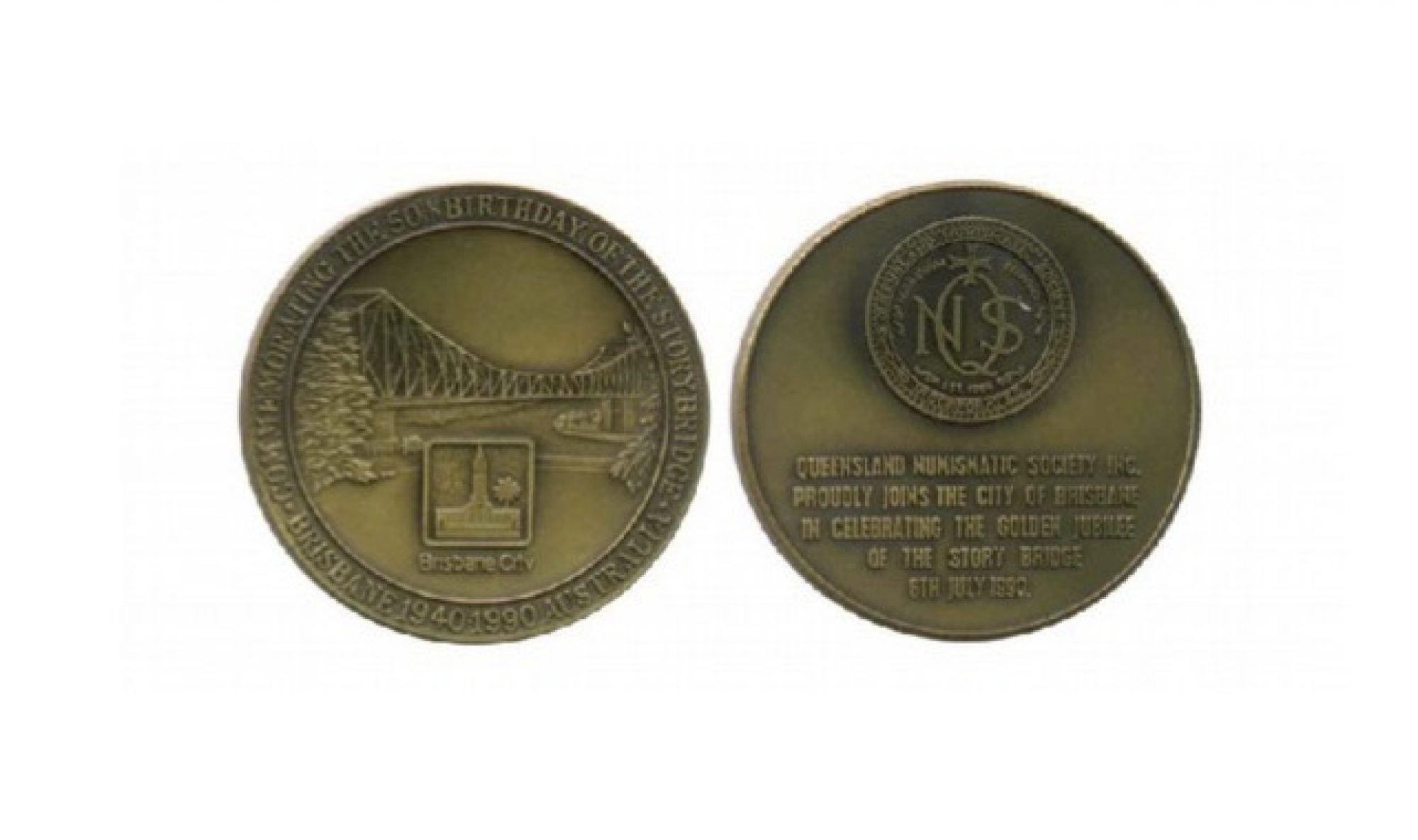by Melvin Williams

Some years ago I purchased a lot of four gold-brown tokens with the legend “1” with “SAFETY” and “BONUS” above and below the figure. The obverse is a lifting hook surrounded by the legend “BHP Whyalla”. Recently, on listing one for the club tender sale, the Editor asked, “What is it? A token or check or what?”. Well, it is obviously a bonus paid to workers on achieving something, but what did they do with it?

(gold-brown)
I had vague memories of an article on them appearing years ago and eventually found it in my file under TOKENS. The article, written by the Rev. A.R. Bowers appeared in the Australian Coin Review in April 1979 – hence my vague recollection. He lists and describes four types that were used. One is for the shipyard, which operated from 1941 to 1979 when it was closed, the others for the steel works. In regard to their use, he quotes form the BHP Review, Jubilee number, June 1935: “Departmental Safety Bonuses are offered in appropriate periods without lost time injuries. This scheme has led to the distribution of quantities of articles useful in the homes and schools, and has carried the safety idea to the families of workmen” (p.97)

(dark blue)
Just recently I gained an uncirculated set of the four tokens together with further paperwork that the previous owner had assembled. As well as the Bowers article, there were two others. One was entitled “BHP Safety Awards” by Colin Tindall in the Australian Numismatic Journal 1978 (p.5,6). The other was from the Whyalla News, May 26th 1982 (p.3) entitled “BHP Safety Bonus scheme to finish”. So here is the story.

Prior to 1969, BHP began a scheme of rewards for its employees related to periods of time worked without any industrial injury occurring. Originally, goods were made available by the company to groups of employees consisting of about 25 men and for periods of time from 35 to 60 days. Further higher valued gifts to any group which completed 365 days. In Jan 1969, the company varied the scheme to provide individual awards to men in working groups by introducing Safety Bonus Tokens (brown for 1 unit of value, blue for 5 units of value). Later, green tokens were introduced for meeting production targets. All goods in the company’s bonus store had a bonus rating with employees accumulating tokens till they had sufficient to purchase the desired item. The store was a mobile caravan which visited designated sites twice a month.
Then in May 1982, after 13 years, a company spokesman said the safety bonus scheme is being terminated ‘because it no longer meets the company’s objectives’. It would be phased out over several weeks to enable workers to cash their tokens. Towards the end of the statement it was revealed that the scheme was being replaced ‘by the employment of a professional safety officer’. I hope the workers took kindly to that!
As the tokens had an exchange value in goods they are really checks rather than tokens, but clearly the more general word ‘token’ has prevailed. Particulars of the check/tokens are:
| Size | 34mm |
| Material | Plastic |
| Colour | Gold-brown (Fig 2) Blue (Fig 3) Green (Fig 4) Production Bonus |
| Obverse | Central metallic-type design (lifting hook) common to all three types |
| Reverse | As described above |

The red token, for the shipyard, is different. It is the same size and material but is uniface. The legend W.S.E.W. SAFETY BONUS (Whyalla Shipyard & Engineering Works) surrounds a central ship design. The token is noticeably thicker than the other three.
The four are clearly an interesting series to collect.
This article first published in the June 2003 Magazine
